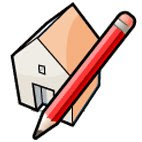Català - Castellano - Deutsch
The Reference Manager is a utility introduced in AutoCAD 2004 that is not very well known since it is external to AutoCAD itself. The purpose of it, as it name states, is to Manage the External References.
To access it you need to go to Start --> Programs --> Autodesk --> AutoCAD 20XX --> Reference Manager.
The interface is pretty simple. The main use I found for it is to re-path XREFs that have been moved to different folders. You cans elect all the XREFs that need re-pathing, right click on them and click "Edit Selected Paths". See the image below.
 The Reference Manager allows you to Manage any file that a drawing uses as a Reference, such as plot style tables, Fonts, Images and XREFs. Being Images and XREFs the ones that most commonly are misplaced, this are the types of files that you will most commonly re-path through the Reference Manager.
The Reference Manager allows you to Manage any file that a drawing uses as a Reference, such as plot style tables, Fonts, Images and XREFs. Being Images and XREFs the ones that most commonly are misplaced, this are the types of files that you will most commonly re-path through the Reference Manager.Re-pathing is something that you can do in AutoCAD using the XRef Manager, the Image Manager, etc. But when a file that was referenced in 100 drawings has been chenaged of location, you don;t want to enter those 100 drawings and repath this XREF in each one. The Reference Manager allows you to do this for the 100 drawings in a few clicks.
What I miss in the Reference Manager is the option to not only repath (choose the folder of the XREF) but also choose a new XREF. Sometimes the broken path is due to a change on the name of a file rather than a change of location. It would be great if the Reference Manager allowed us to point multiple files to the new XREF.

Show me more...

























